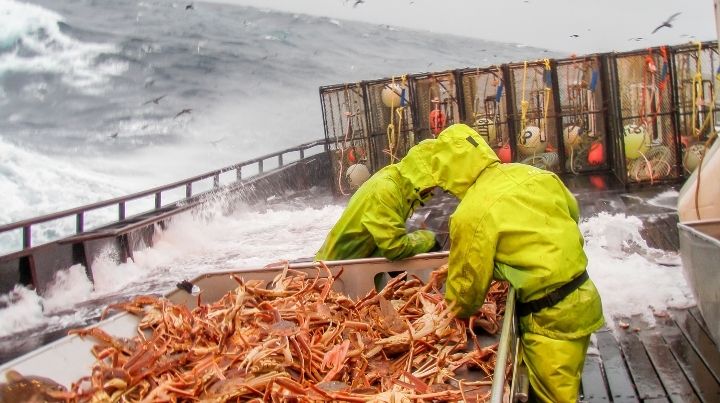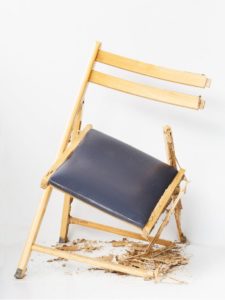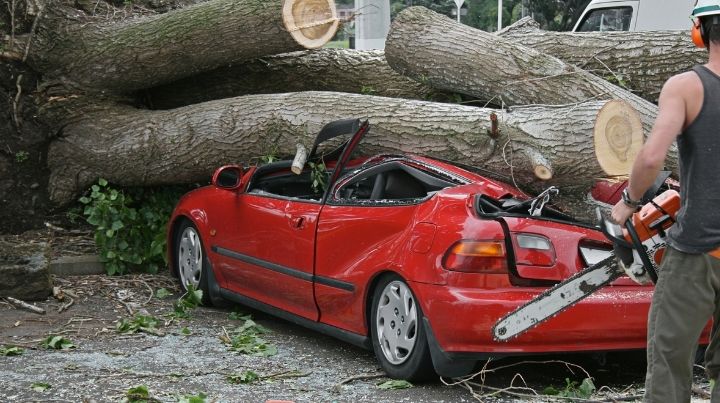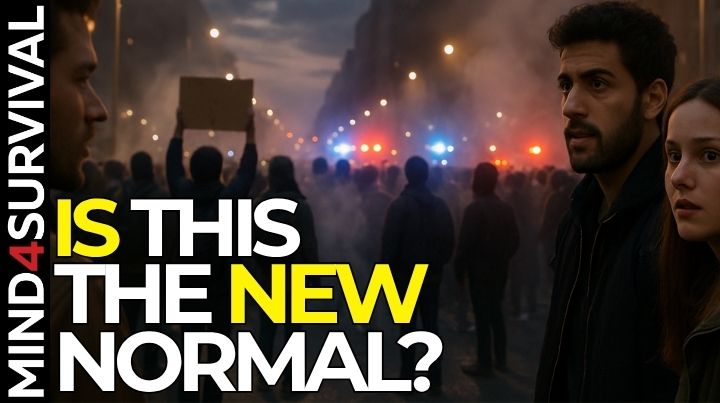What Does Safety Third Mean?


Podcast: Play in new window | Download
What would you say if I asked you, “What does safety third mean?” After all, shouldn't it be the number one thing for all of us? It seems like that is common sense, right?
The answer to those questions and the meaning of putting safety in third is yes, no, and it depends.
What is Meant by Safety Third?
Safety Third means that you are prioritizing your safety and security. It's about being prepared for problems, so they don't happen to you.
Putting safety in third should be a way of life and a perspective that anyone can practice every day, not just safety professionals.
What About Safety First?
 For years, we have all heard people say “Safety First.” We see construction sites with banners that read “Safety First!” or “Safety is Our #1 Goal!”
For years, we have all heard people say “Safety First.” We see construction sites with banners that read “Safety First!” or “Safety is Our #1 Goal!”
However, as surprising as it may sound, your safety is not everyone's top priority. When it comes to keeping ourselves safe, the reality is that our personal well-being is our individual responsibility.
The fact is that our safety is our personal responsibility and cannot be shifted to someone else as their priority. After all, if we assume our safety is someone else's priority, then do they transfer the responsibility of their life to someone else?
The fact is, we all have our own safety needs, and therefore, we are all responsible for protecting ourselves.
Why Does Mike Rowe say Safety Third?
The person who makes an excellent argument for the meaning of putting safety in third is Mike Rowe. You may remember Mike Rowe as the host of Dirty Jobs. To answer the question “What does safety third mean,” Rowe points to an experience he had while working on a crab boat in the always dangerous Bering Sea.
A Crab Boat on the Bering Sea
A storm came up while working on the crab boat, and the seas became rough. Icy rain made the deck and gear slick and challenging to handle. Plus, the addition of thirty-foot seas made the work conditions about as bad as they could be.
With the conditions worsening and danger increasing, Mike Rowe went to ask the boat captain if he was going to shut down work on the deck. When asked, the captain replied, “No, safety third.” Confused by the captain's response, Mike responded, “Isn't safety first?”
The captain then explained:
“No, safety third. Safety is third because each person has individual needs that others may not be aware of. Therefore, the individual is the responsibility of the individual.”
Mike turned and went back to work on the tossing and turning deck. As he did, he had an epiphany about how he wrongly approached his personal safety for his entire life. Now though, he was number one, not number three!
What is First and Second if Safety is Third?
As the captain told Mike, safety is third. Heck, it may not even make the top five at times. If that's the case, and it is, what is first and second if safety is third?
Safety Can Not Always be Your Primary Focus
First, as in the number one thing people will do, as I've written, is whatever you prioritize as the number one thing you should focus on. And, while safety is essential, it is not, and I'll hazard, it cannot always be your primary focus.
For example, visualize that you're home with friends enjoying a great dinner and conversation. Now, imagine what you're doing during that dinner.
Do You Eat Padded Up?
 Are you wearing a helmet, elbow and knee pads, and shorts with extra padding in the butt? Do you ignore the conversation out of fear that you may end up on the floor?
Are you wearing a helmet, elbow and knee pads, and shorts with extra padding in the butt? Do you ignore the conversation out of fear that you may end up on the floor?
After all, chairs break every day. When chairs break, there is a remote possibility that a person may become injured.
So, is a broken chair worth worrying about? It can be. And in those instances, most people put their safety as number one by either giving the chair a jiggle and a keen eye before sitting in it, sitting in another chair, or figuring out another option.
Then, with the chair safety taken care of, we can make good food and fun times our number one priority and push our safety focus down to a lower priority.
You Can't Have Eyes Everywhere.
Now, while you can't (or shouldn't) run around padded up all of the time, you also can't have eyes everywhere.
Therefore, is the intelligent course of action to expect someone else to keep you out of harm's way? No, it's not. After all, what if they miss something?
With that, it's not crazy to hope that others will keep an eye out for us and alert us if something bad happens. However, what is crazy, is expecting a warning.
In the end, placing our security in the hands of another is no better than a roll of the dice. Ultimately, relying on others to be responsible for our life and safety only results in the unintended consequences of increased danger and risk.
Safety is About Identifying and Managing Risk
When it comes to deciding what our primary focus should be, we accomplish that through risk analysis. And, while there is an entire profession built around the science of risk management, we as ordinary people can manage our risk.

How do we do that? We do that as what my good friend and internationally renowned risk manager Ed Clark talks about when he tells people there are three questions we must ask when managing your risk profile.
- What do you have to protect?
- What do you have to protect it with?
- What do you have to protect it from?
Safety is a Risk-Based Decision
Once we understand the answers to our three risk profile questions, we can then decide whether or not we are putting our safety at number one or putting it third?
Heck, we may feel safe enough that, at times, we DO put other people's safety at the top! And, that's fine because we didn't transfer the responsibility for our safety to someone else because we kept it.
We kept it by making the conscious and informed decision to focus on someone else's safety at that moment.
How to Manage Your Safety
Be Your Best Personal Advocate!
When it comes to our safety and personal protection, we MUST be our own best advocates. As discussed, we should NOT expect others to make our safety their first concern.
After all, each of us has our own risk-based needs and those may not include watching out for others.
With that, everyone should be able to make well-informed, risk-based decisions founded in their individual analysis of their risk profile. And that's how we work to keep ourselves safe, secure, and prepared.
How Safety Professionals Manage Their Safety
People who actively participate in the dangerous job of saving lives, like firefighters, offer a great example of people who follow Rowe's mantra. As part of their job, firefighters have the responsibility of facing risks that are unimaginable to most people.
As you can see in the tragic below video of a fire company in action, firefighters cannot avoid exposure to dangers in their job.
(Warning: This video may make some viewers uncomfortable.)
And, just like safety, managing and addressing risk MUST be the person's responsibility in the thick of it. In this case, the firefighters who risk themselves while saving lives.
How Others Can Manage Their Workplace Safety
Firefighters are not the only ones in the line of fire when it comes to risk and the potential to receive numerous injuries and broken bones throughout their careers.
Non-public safety workers also have the personal responsibility of putting their safety first. That applies to any workplace, whether in the office, outside, active, or sedentary.
Risk happens, and all workers bear the responsibility of working to mitigate it and maintain occupational safety. The way we do that is, as Mike stated, by focusing on and addressing our risks, regardless of our job.
What if Your Company Doesn't Manage Workplace Safety Well?
The fact is that not every company does a great job of providing a safe work environment for their workers.
Sure, an organization may attempt to look like safety is their number one concern. However, posting an outdated sign or two in the break room and maybe a sign about safety in the bathroom to meet OSHA requirements is often where their concern ends.
The fact is that signs don't save lives because signs have no culpability in managing our safety. What does save lives and prevent problems and works to protect human life is each of us doing our part.
We Keep Other Safe as a Byproduct of Personal Safety Efforts
Then, when that happens, we'll find that our safe approach to the world around us not only protects ourselves but, as a byproduct, helps reduce the risk of others.
How to Implement Safety Third
When it comes to managing our risk and ensuring safety, we must accept our mandate to protect ourselves from accidents and negligence. We'll see our everyday lives develop into more safe, confident, and self-reliant lives as we attempt to do so.
However, what happens when an organization doesn't follow through on its responsibility. Again, our safety should be a priority that we determine. If an employer doesn't work to ensure a safe work environment, we should have an honest conversation with an appropriate decision-maker.
Sometimes, there may be no organization safety representative. When that's the case, it's up to us to calmy, without being chicken little, put the situation into the proper context, and discuss with the person most responsible for organizational safety.
Remember to keep things in context to get your point across and its importance for you.
What Does Place Safety in Third Mean for Preppers
Placing safety in third means a lot for preparedness-minded people.
That's because, as preppers, we do a couple of things.
We Plan For and Do Hazardous Things
 It shouldn't be a shock if you know anything about survival preparedness. Prepping involves planning for and doing dangerous things.
It shouldn't be a shock if you know anything about survival preparedness. Prepping involves planning for and doing dangerous things.
We love many of the things prepping involves, including actions and items such as chainsawing, shooting, burning, building, trekking, and so on.
We Have a Mindset That Can Get Us in Over Our Heads
Many of us in the prepping community have taken shortcuts when it comes to our safety.
Sometimes those shortcuts are necessary. Other times they're foolish and can be costly to our health and safety.
Safety in an SHTF Event
The fact is, foolish injuries during disasters and at other ill-opportune times can be the first domino to fall in a line of cascading events.
A slight cut today can be tomorrow's deep infection. A twisted ankle may mean a lack of ability to gather firewood to stay warm in the coming cold. And, with those injuries, we're just talking about minor problems.
What happens when you don't properly consider your safety and a much worse injury happens? Perhaps an injury that put you in bed for a week or more?
What then during an SHTF disaster?
Stay Sharp, Stay Smart, Stay Alive
When it comes right down to it, the act of staying safe depends upon our situational awareness to survive and minimize our unwanted struggle. It also hinges upon our ability to make good choices based on fact and your well-earned experience.
In other words, don't let your ego and haste put you in an unsafe position that you may not live to regret.
The choice and the safety of the results are yours.
The Bottom Line
I hope you've found this article informative and that it has given you some insight into the meaning of the mindset of a Bering Sea crab boat captain.
Understanding safety along with the ebb and flow it plays in our lives can be a valuable life lesson to remember. That is especially as we move through the dangers of our modern world.
So, with that, let's wrap this up with a quote.
The quote I feel captures Mike's philosophy on safety is by Kina Repp, who said:
“You are your last line of defense in safety. It boils down to you.” ~Kina Repp
With that, what do you think about safety first vs. third? Let us know by leaving a comment below.
Stay safe,

Related Articles
FREE Guide
Read the Best Seller
Join Mind4Survival
Stay informed by joining the Mind4Survival! 100% Secure! 0% Spam!
Affiliate Disclosure...
Mind4Survival is a free, reader supported information resource. If you make a purchase through our link, we may, at no cost to your, receive an affiliate commission.
Do You Want To Be Ready No Matter What?

Download our free 39-page guide with interactive, 7-Day Emergency Kit Checklist and take the first step toward real preparedness.
- Know exactly where to start.
- Save time and money.
- How-to build a complete Basic Emergency Kit.
- Level up your safety and security.
Join Mind4Survival
Stay informed by joining the Mind4Survival! 100% Secure! 0% Spam!






I truly understand the concept, and that is message is wisdom, but I’m so over the government telling me how to protect others that I wish someone would make a mask that said YOUR SAFETY IS ON YOU. I’M WEARING THIS AGAINST MY BETTER JUDGMENT.
The best sign I have seen is on Ben Napiers building on HGTV Home Town. “The beat safety device is a careful worker”.
That is great!
who ever put “Safety is my First Priority”® Failed to see it was already trademarked® copyright notice, © c circled copyright symbol , informs users of the underlying claim to ownership credit for a published work. Who ever put this on T-shirts forgot to ask permission , as it always seam a copyright thief is everywhere, so be sure to add if you are the true author of you work ®